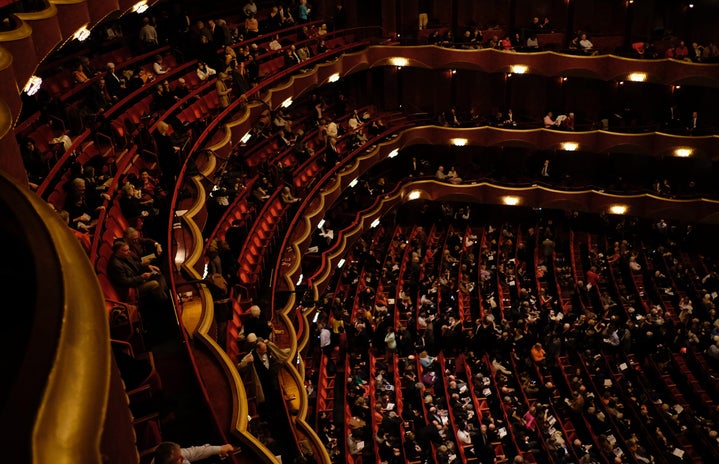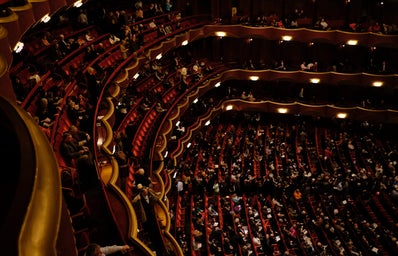The release of RuPaul’s Drag Race UK has broiled up a melting pot of opinions
A huge turnout filled the halls of this summer’s Drag World convention, trailing endless queues of bouffant wigs, hourglass padding and colourful couture. From behind me I heard “can you see me fanny?” and as I glanced around, I was met by some colossal breastplates and cheeks so contoured you could prick your finger on them… I’d never felt so at home.
The UK release of RuPaul’s Drag Race has without a doubt furthered the excitement around Drag. Being something relatively new to some viewers, it has certainly opened a new online discourse for Britain – be it good, bad or ugly. While scrolling amid the waves of ‘yaaaas’ and ‘work bitch’, I was surprised further down to see some of the more negative reactions. It pushed me to research beyond simply poring over the extravagant outfits, to find alternative, more critical perspectives rooted in the political undercurrents of its history. So, at the risk of sounding cynical, is Drag nothing more than an anti-feminist caricature?
Part of the issue for many feminists is the over the top and overtly sexual depiction of women. Typically, Drag performances exaggerate everything society has typically objectified with regard to women’s bodies, dress, and mannerisms. If you’ve ever seen RPDR, you’ll be familiar with some of the challenges the Queens have to participate in. Take Season 4’s wet T-shirt contest, the Queens wore extremely large breastplates and were pitted against each other to see who could be the most ‘wet n’ wild’. Ironically, the nipples of these breastplates were censored out… What is more, Drag performances are often characterised by ditzy, promiscuous voices which reinforce a regressive stereotype of women. It begs the question, why Drag is so highly praised for men but when women poke fun at masculinity it doesn’t garner the same response?
Other feminist discernments of Drag queens centre on the notion of gender appropriation. Over the past decade, efforts to vilify cultural appropriation have (rightly) increased– yet for centuries men have been allowed to liberally appropriate gender traits from women. Perhaps since feminists are often stereotyped as having little sense of humour, an attempt to be “in on the joke” has allowed Drag to progress this far without much backlash.
Regardless, Drag artists have been criticised for benefitting from the sexual attention received by women without having the subjective knowledge nor desire to actually be one. The perception of having one’s cake and eating it too seems to be what is most frustrating. When a man can gain respect and prestige dressed as a woman, yet still profit from a phallocentric society when he untucks and removes his lace-front wig, then something is amiss.
However, it must be said that Drag is an art form that has been in constant progression and refinement since the late 1800s – and my, has it come a long way. Its initial phases were tastelessly known as the ‘pansy craze’, whereas today it is one of the most esteemed and political forms of entertainment worldwide. Originally adopted before women were allowed to perform on stage, Drag has now become a creative outlet for the LGBTQ+ community. So popular did the movement become that the Club Kid culture from the 80s and 90s pioneered many alternative forms of artistic expression.
However, that same artistic expression has led to many Queens being victims of misogyny, homophobia and other forms of discrimination. Drag is used as a way to challenge this; many of the protesters in the 1969 Stonewall riots were female impersonators fighting for gay rights. For many, drag represents an empowering means of destabilising and satirising the oppressive constructs of binary gender. It is clear that its purpose was never to oppress women, even if it does so inadvertently.
We must also remember that drag performance is not limited solely to men. It can also offer a platform for women who may not fit the normative female stereotype. Newcastle-based drag performer, Venus Dimilo, has a condition called Thrombocytopenia Absent Radius, meaning she was born with no forearms. Through Drag 27-year-old Sophie Harris has received support and acceptance as a disabled non-binary performer. In an online podcast, Harris shares “…Drag has taught me how to talk about [my condition] in a humorous way,” and “explore a more feminine side of [my] identity”. Although some may criticise this as subverting the original Shakespearean definition of ‘Dressed Resembling A Girl’, effort-wise Harris has not benefitted from any advantage a woman would have in creating a female illusion. “Apart from the fact I don’t tuck, everything I do is the same as a male drag queen in not relying on facial features or body shape”. Although female drag is less common, in this case it has opened doors for someone who otherwise may not have had the same platform.
Though originating in subjugation and stereotypes, today drag has progressed an essential dialogue that has opened up opportunities for many more people than just men in wigs. It is through drag that rigid social constructs, such as identity politics and human rights, have been subverted and transformed into something more exciting, diverse and progressive. Onto which stage will these Queens shantay next?



